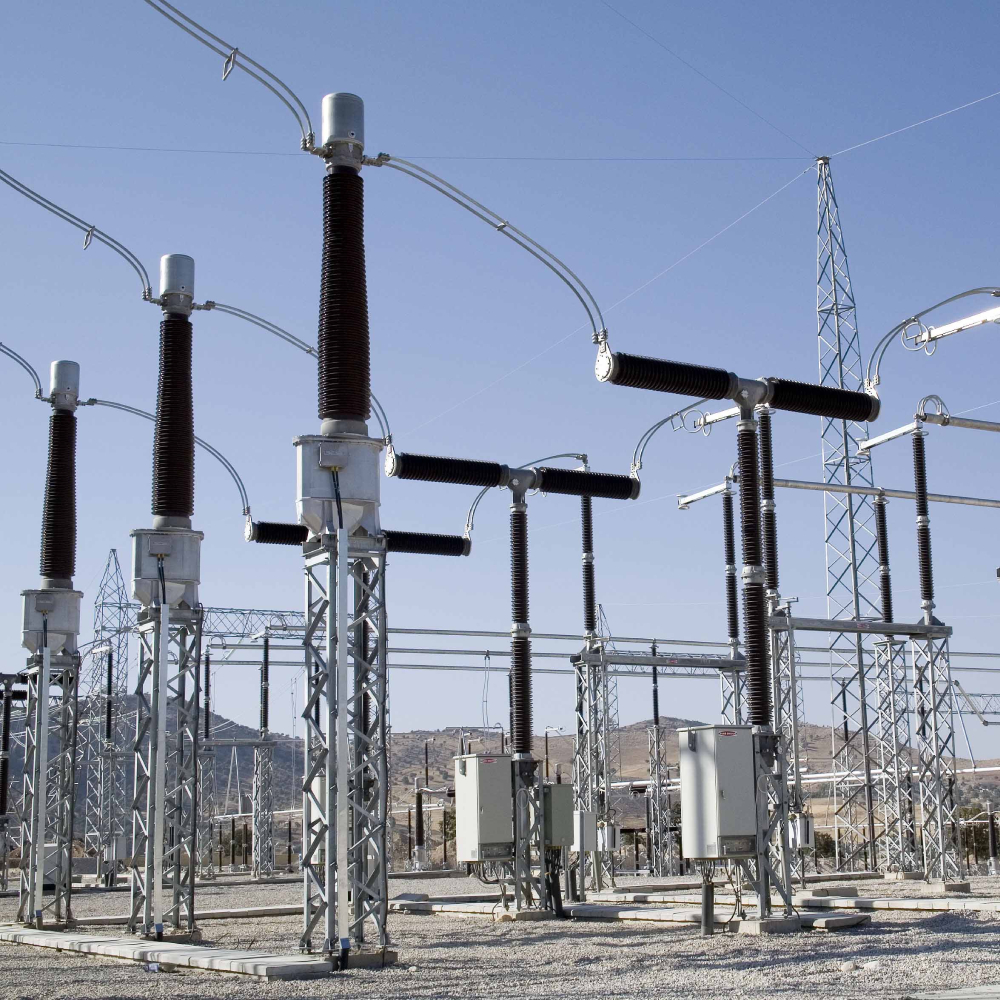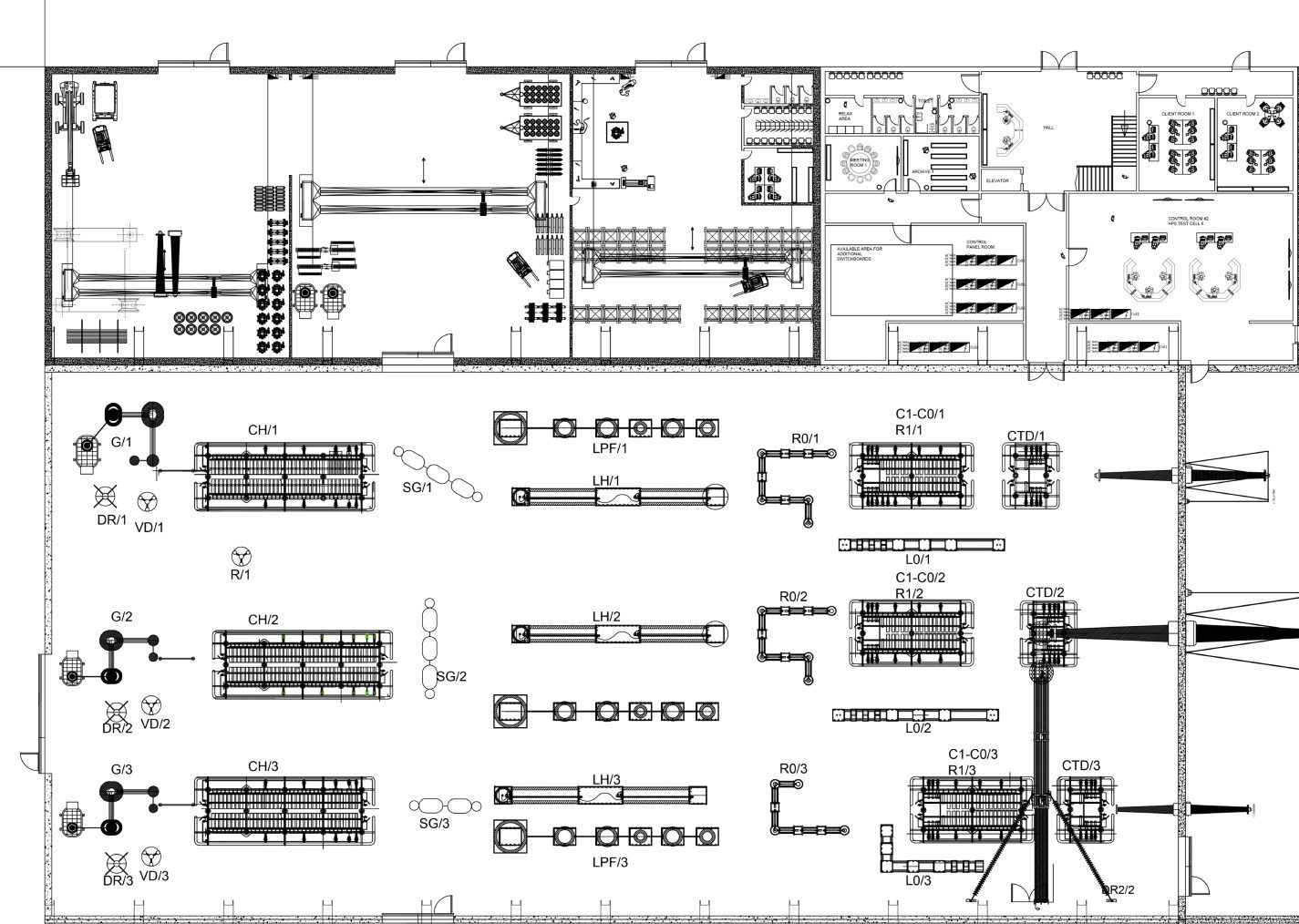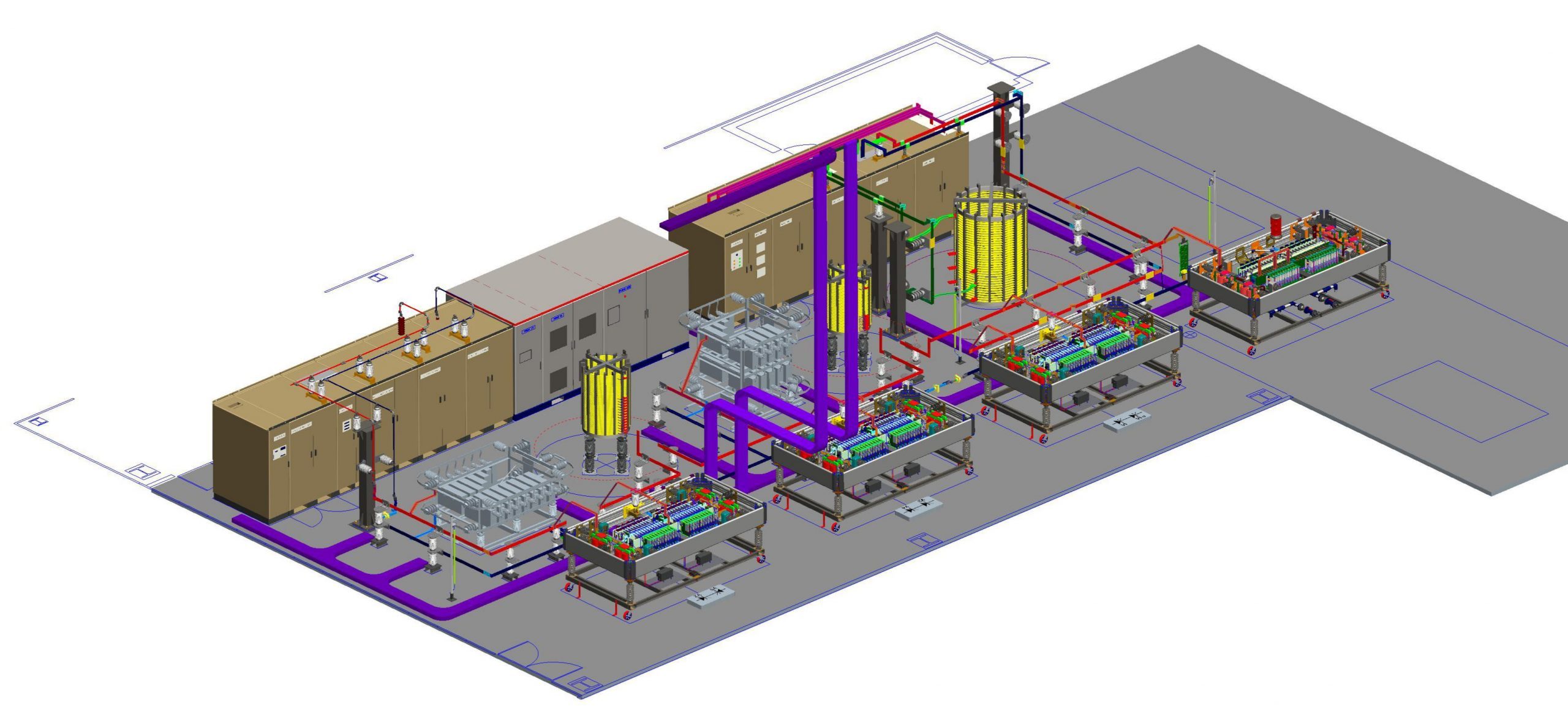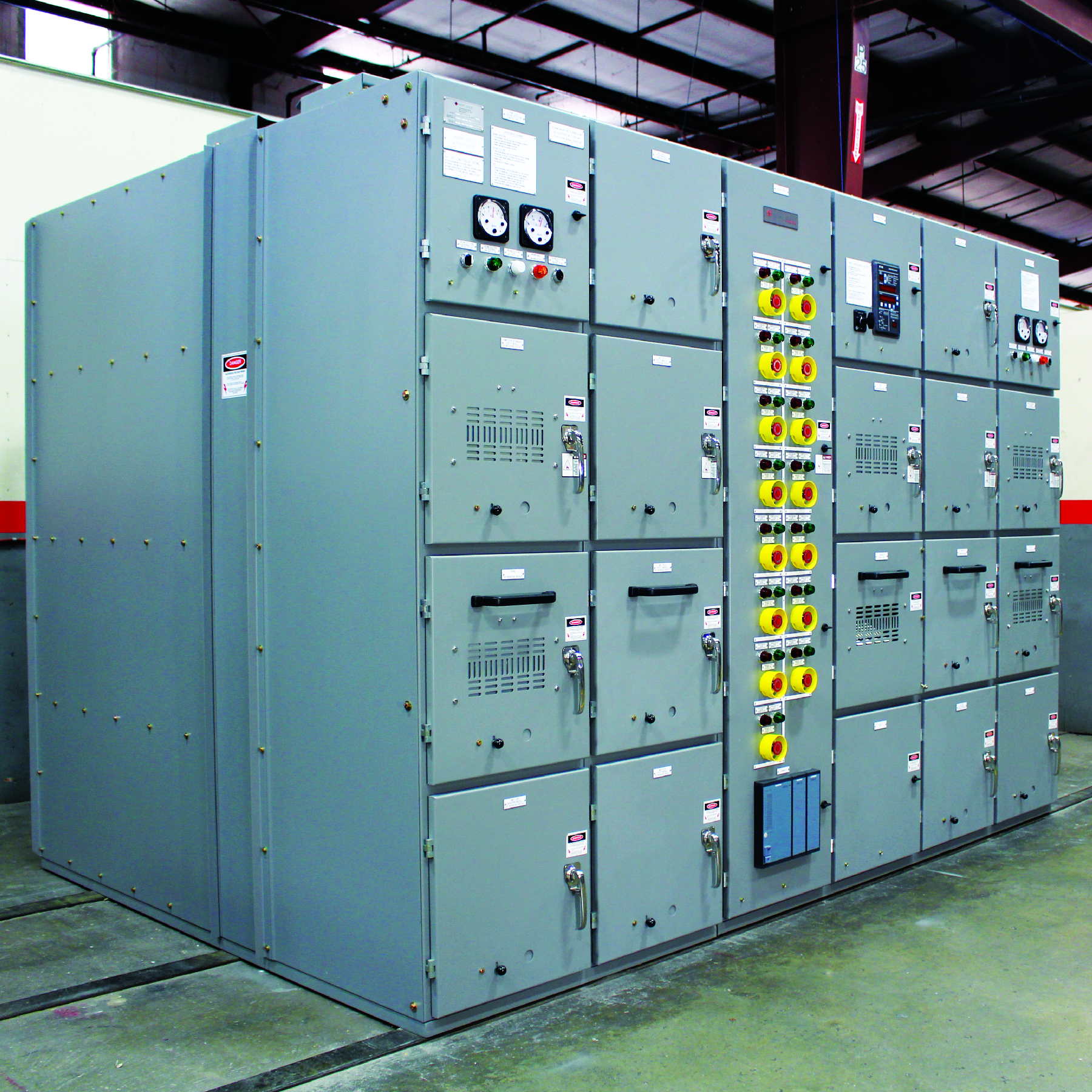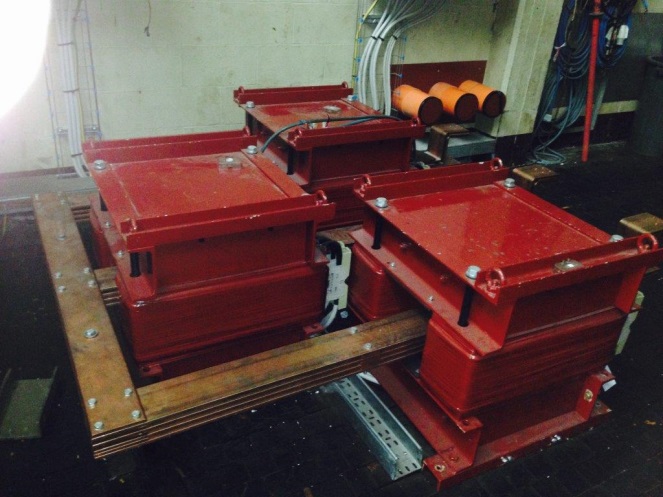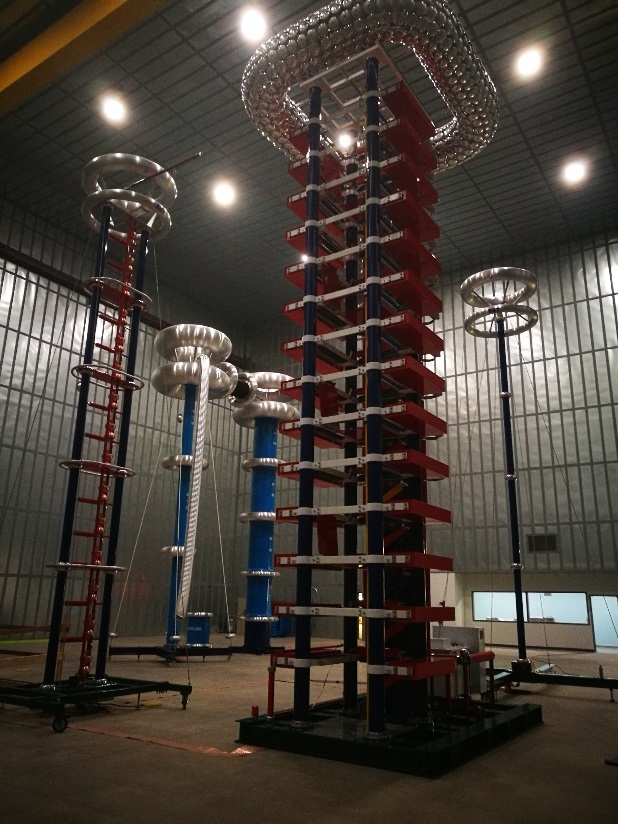Design of Electrical Testing Laboratories
DeMEPA skills and experience cover all the different type of Electrical Testing Laboratory for equipment
applied in electrical transmission and distribution systems and in industrial applications
up to the following maximum equipment ratings:
| High Power Direct tests | up to 550 kV, 1-phase up to 72,5 kV; up to 85 kA, 3-phase |
| High Power Synthetic tests | up to 1200 kV and 100 kA, 1-phase up to 363 kV and 80 kA, 3-phase |
| Low voltage short circuit tests | up to 250 kA, 3-phase |
| Short circuit tests on power transformers | up to 765 kV and 780 MVA |
| Temperature rise tests | up to 40 kA, 3-phase |
| Dielectric tests | up to 1200 kV |
| Cable ageing and pre-qualification tests | up to 550 kV |
HIGH POWER LABORATORY FOR DIRECT TESTING
In a High Power Laboratory for direct testing the applied voltage, current, transient and recovery voltages, reproducing the normal and abnormal (such as short-circuit) operating conditions of the equipment, are obtained from a single power source. The Laboratory must be supplied by an external HV Line or by Short-circuit Generator.
The following direct tests:
- Short-time withstand current and peak withstand current tests
- Direct making and breaking short-circuit tests
- Mainly active load current switching tests
- Capacitive and Inductive switching tests
- Power arc tests on Switchgear, Arresters and Insulators
are performed on:
- Live tank and dead tank circuit-breakers
- Gas-insulated Switchgear
- Metal Enclosed Switchgear
- Disconnectors&Switches
- Current and Combined Instrument Transformers
- MV bus-bars
- Current Limiting and Expulsion Fuses
- Surge Arresters
HIGH POWER LABORATORY FOR SYNTHETIC TESTS
The synthetic testing is the more economical test method in the event the requested power in direct testing is higher than the power available from the Short-circuit Generator (or from a suitable HV Line). The stress voltage and the stress current are applied to the equipment under test, with relatively low current and low voltage respectively, according to test sequences defined by the Standard (IEC, IEEE) in order to assure the complete equivalence to the direct testing.
Demepa has developed appropriate tools for the design of synthetic circuits capable of obtaining the TRVs foreseen by the standards.
Layout of testing laboratory for synthetic tests
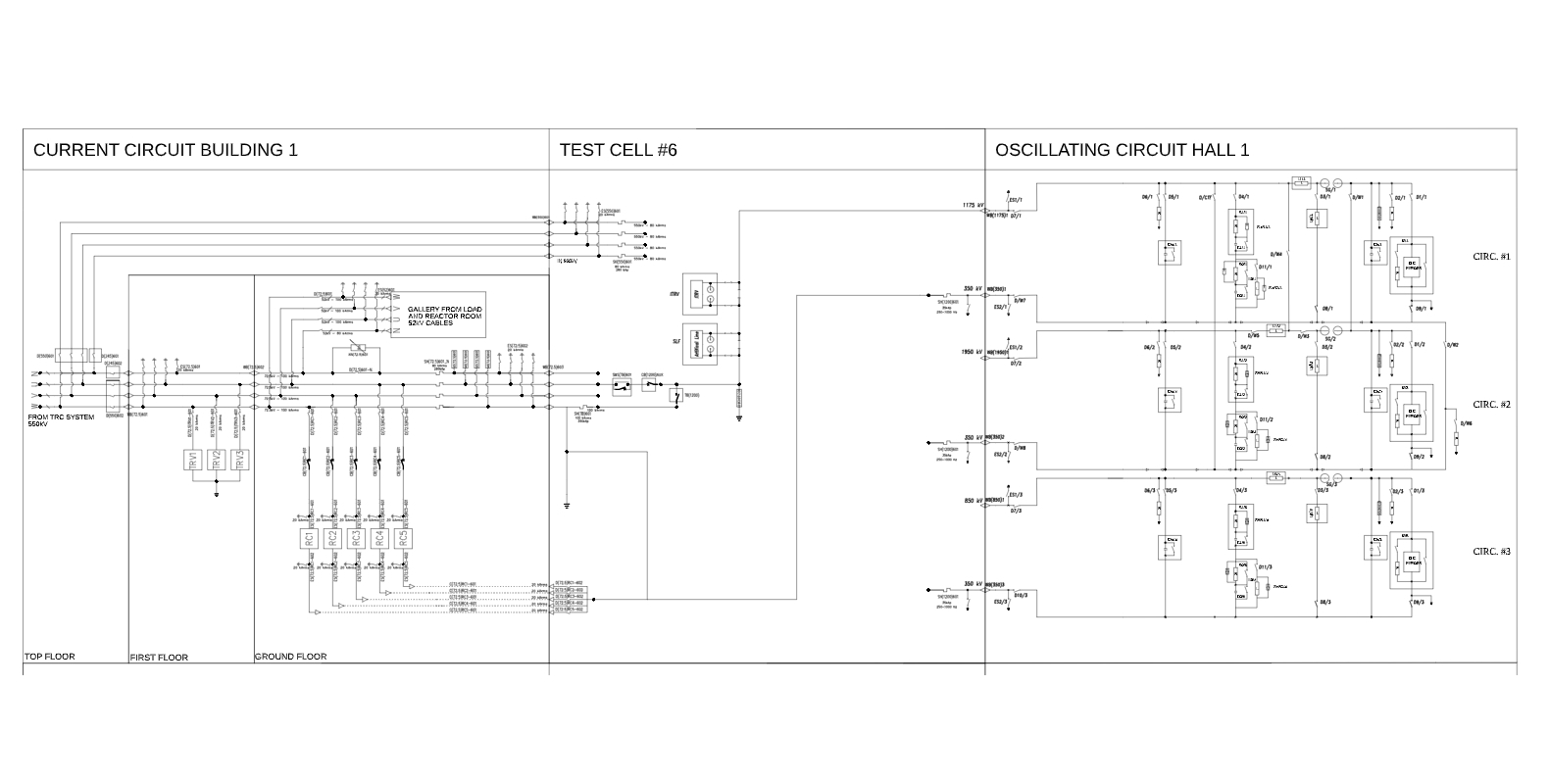
Synthetic tests are also used for operational electrical tests on HVDC thyristors valves.
Layout of synthetic laboratory for HVDC thyristor valves operational test
LABORATORY FOR LOW VOLTAGE SHORT CIRCUIT TESTS
In this Laboratory are usually performed Short-circuit current withstand capability test and Internal arc test on the following LV equipment:
- Circuit Breakers for industrial uses,
- Switches, disconnectors, switch-disconnectors,
- LV Assemblies,
- Contactors and motor-starters,
- Bus ducts, Fuses .
Whatever the Laboratory power supply (from an incoming HV Line or by Short-circuit Generator) a suitable step-up transformer has to be used to obtain the required very high short-circuit current (up to 300 kA).
SHORT-CIRCUIT TESTS LABORATORY ON POWER TRANSFORMERS
In addition to the Short-circuit withstand test in this Laboratory the following tests on Distribution and Power Transformers are usually carried out:
- Measurement of no-load loss and current at 90 % and 110 % of rated voltage,
- Measurement of dissipation factor (tan δ) of the insulation system capacitances,
- Measurement of impedance(s),
- Measurement of d.c. insulation resistance of each winding to earth and between windings,
The most convenient power source of a Laboratory addressed to perform short-circuit withstand tests on transformers is a line coming from a HV substation with suitable short-circuit power. This because a short-circuit withstand tests of a transformer last at most 500 ms, so the impact on HV network is very limited in time. Moreover the apparent power of a HV power grid is significantly higher than the short-circuit power of one generator, in so allowing to test power transformers of rated power much higher.
According to the IEC Standard 60076-5, three phase transformers can be tested adopting the following test circuits:
- three phase test circuit in a pre-set or post-set configuration,
- single-phase equivalent test circuit.
The three phase tests circuit has to be preferred when testing a three phase transformer. In the pre-set method the transformer under test is fed at the higher rated voltage windings, being the other winding already in short-circuit conditions. Conversely in the post-set method the transformer under test is at first fed at one side and the short-circuit is closed lather on the opposite side.
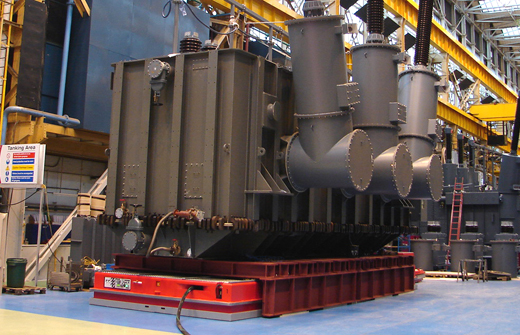
The three phase tests circuit has to be preferred when testing a three phase transformer. In the pre-set method the transformer under test is fed at the higher rated voltage windings, being the other winding already in short-circuit conditions. Conversely in the post-set method the transformer under test is at first fed at one side and the short-circuit is closed lather on the opposite side.
LABORATORY FOR TEMPERATURE RISE TESTS
The Laboratory performs Temperature rise tests, at ambient or at low/high temperature, on Switchgear and Controlgear equipment, Gas Insulated Switchgear, Instrument Transformer, Fuses and Bus-bars.
On Power Transformers the Induced Voltage tests are performed in this Laboratory in addition to the Temperature rise tests.
The testing equipment to be used are related to the impedance of the test object.
For low impedance equipment, such as Switching equipment and short Bus-bars, the Heating Transformers is usually the most convenient solution: the requested test current is induced by means of a number of toroidal-core transformers.
For higher impedance equipment (i.e. Power Transformers, long Bus-bars) a step down transformer able to feed the high current test has to be adopted.
In the event of Temperature rise tests to be performed both at 50 Hz and 60 Hz or to carry out Induced Voltage tests on Power Transformers, it is convenient the use of a Static Frequency Converter to obtain the requested power at the required frequency.
LABORATORY FOR DIELECTRIC TESTS
This Laboratory is addressed to carry out the following tests:
- Lightning Impulse voltage,
- Chopped Lightning Impulse voltage,
- Switching Impulse voltage (dry and wet),
- Power Frequency (dry and wet),
- Ferro resonance,
- Combined voltage,
- Partial Discharge,
- Radio Interference Voltage,
- Tanδ measurement.
on the following equipment:
- Switchgear and Controlgear,
- Gas Insulated Switchgear,
- Metal enclosed switchgear and controlgear,
- Power Transformers,
- Shunt Reactors,
- Instrument Transformers,
- Bus-bar/Busduct,
- Series capacitors,
- Fuses,
- Surge Arresters,
- Bushings,
- Insulators.
In the frame of dielectric tests it has to be considered the Pollution tests on ceramic, glass and polymer insulators. These tests require a dedicated facility housing the insulators located in a confined environment while the power sources (power transformer and relevant regulator for AC tests, DC generator including a rectifier converter, AC capacitors and DC smoothing capacitors for DC tests) and the voltage dividers are placed in a separated room.
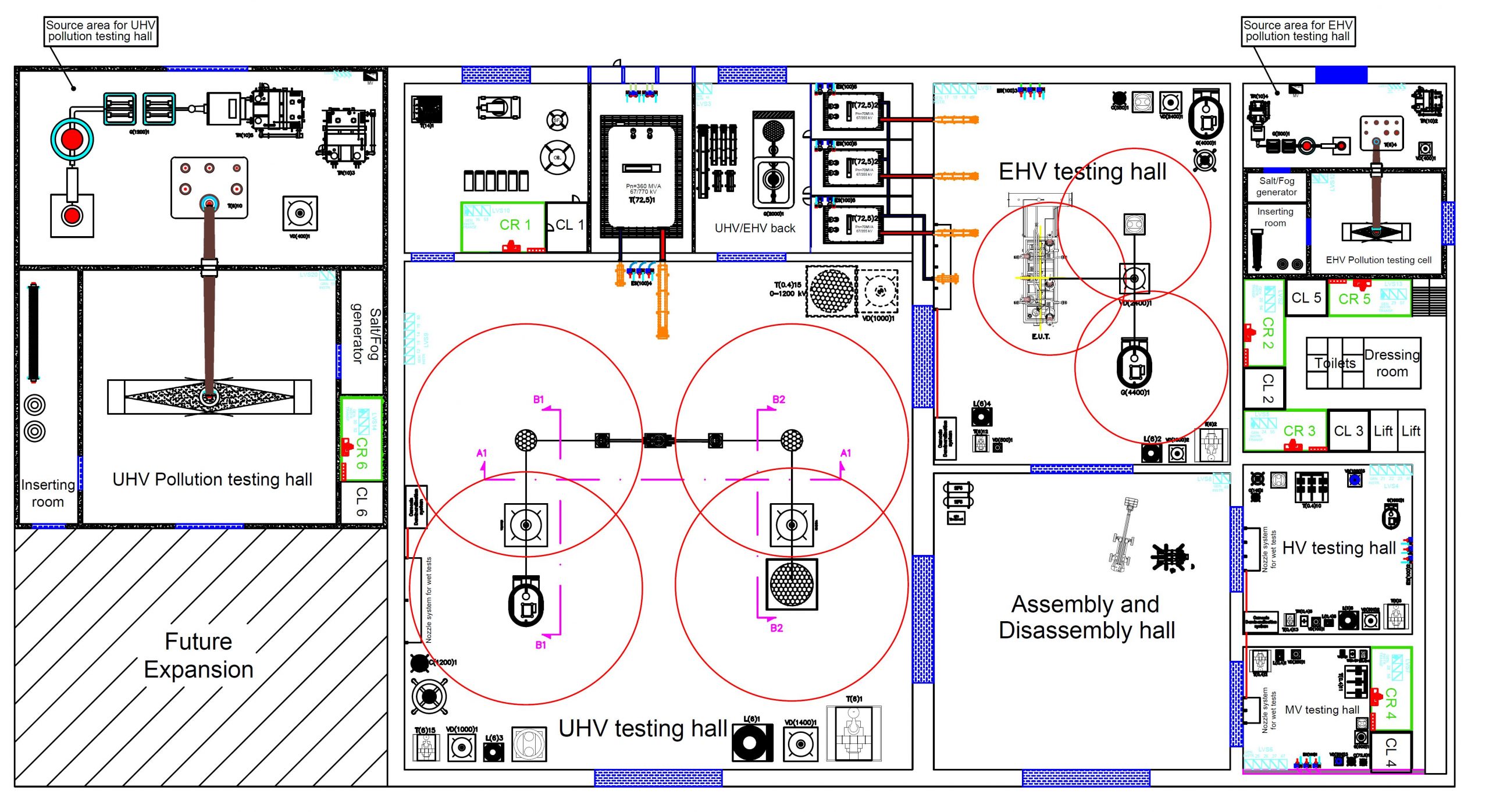
LABORATORY FOR CABLE AGEING, ELECTRICAL
AND PRE-QUALIFICATION TEST
On the extruded cable all the following tests (with some exceptions for cables with rated voltage lower than 7,2 kV) have to be performed in the frame of the ageing, electrical and pre-qualification tests:
- Heating cycle and Heating cycle voltage,
- Lightning voltage tests,
- Switching impulse voltage test (only for cable to be used in system with rated voltage above 275 kV),
- Power frequency voltage tests,
- Tanδ measurement,
- Partial discharge at ambient and high temperature.
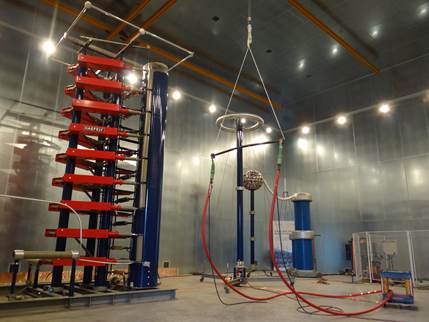
The dielectric tests are performed on the cable with the conductors heated through a current flow at a temperature a few degrees higher than their maximum value in operation. Several of these tests have a long lasting one and they are to be repeated several times on the same sample.
For the above reason dedicated testing equipment are to be used for such tests on Power Cable (different from them addressed to the switching equipment) and dedicated area must has be reserved in Testing Laboratory layout.

